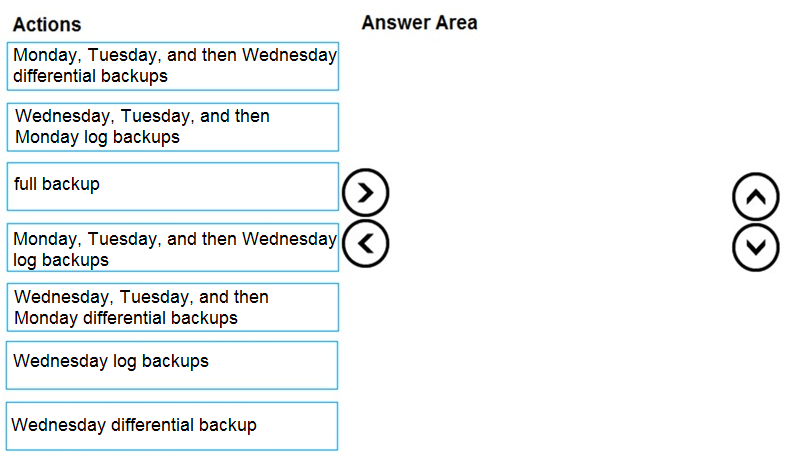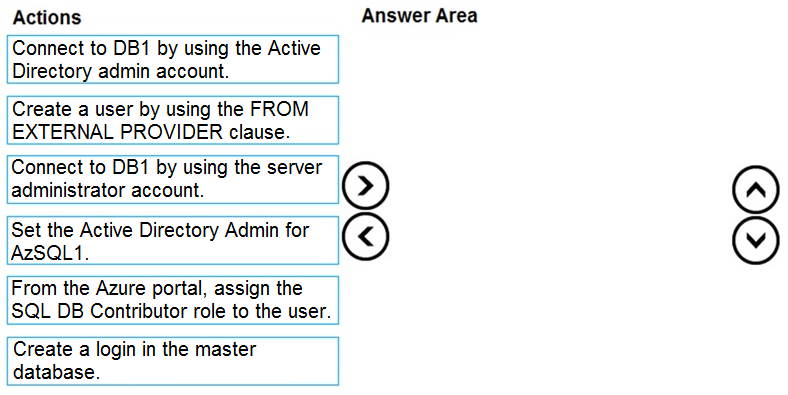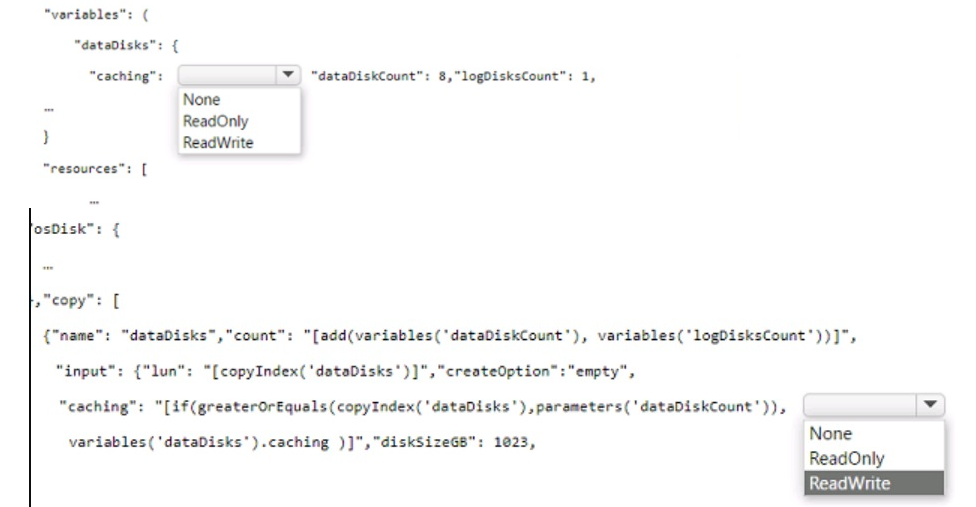Microsoft DP-300 - Administering Relational Databases on Microsoft Azure
You have SQL Server on an Azure virtual machine that contains a database named DB1. DB1 is 30 TB and has a 1-GB daily rate of change.
You back up the database by using a Microsoft SQL Server Agent job that runs Transact-SQL commands. You perform a weekly full backup on Sunday, daily differential backups at 01:00, and transaction log backups every five minutes.
The database fails on Wednesday at 10:00.
Which three backups should you restore in sequence? To answer, move the appropriate backups from the list of backups to the answer area and arrange them in the correct order.

You have SQL Server 2019 or an Azure virtual machine that runs Windows Server 2019. The virtual machine has 4 vCPUs and 28 GB of memory.
Vou scale up the virtual machine to 8 vCPUs and 64 GB of memory.
You need to reduce tempdb contention without regatively affecting server performance.
What is the number of secondary data files that you should configure for tempdb?
You have a Microsoft SQL Server 2017 server.
You need to migrate the server to Azure. The solution must meet the following requirements:
• Ensure that the latest version of SQL Server is used.
• Support the SQL Server Agent service.
Minimize administrative effort.
What should you use?
You have a new Azure SQL database named DB1 on an Azure SQL server named AzSQL1.
The only user who was created is the server administrator.
You need to create a contained database user in DB1 who will use Azure Active Directory (Azure AD) for authentication.
Which three actions should you perform in sequence? To answer, move the appropriate actions from the list of actions to the answer area and arrange them in the correct order.

You have a version-8.0 Azure Database for MySQL database.
You need to identify which database queries consume the most resources.
Which tool should you use?
You need to use an Azure Resource Manager ARM) template to deploy an Azure virtual machine that will host a Microsoft SQL Server instance. The solution must maximize disk I/O
performance for the SQL Server database and log files
How should you complete the template? To answer, select the appropriate options in the answer area.
NOTE: Each correct selection is worth one point.

You have an Azure subscription.
You create a logical SQL server that hosts four databases Each database will be used by a separate customer.
You need to ensure that each customer can access only its own database. The solution must minimize administrative effort
Which two actions should you perform? Each correct answer presents part of the solution
NOTE: Each correct selection is worth one point.
You have four Azure subscriptions. Each subscription contains multiple Azure SQL databases.
You need to update the column and index statistics for the databases.
What should you use?
You have an on-premises Microsoft SQL Server 2016 instance that hosts a database named db1. You have an Azure subscription that contains an Azure SQL managed instance named Mil.
You plan to perform an online migration of db1 to MM by using Azure Database Migration Service.
You need to create the backups for the migration. The solution must minimize the number of backup files created.
Which type of backups should you create, and how should you store the backups? To answer, select the appropriate options in the answer area.
NOTE: Each correct selection is worth one point.

Your on-premises network contains a Microsoft SQL Server 2016 server that hosts a database named db1.
You have an Azure subscription.
You plan to migrate db1 to an Azure SQL managed instance.
You need to create the SQL managed instance. The solution must minimize the disk latency of the instance.
Which service tier should you use?








